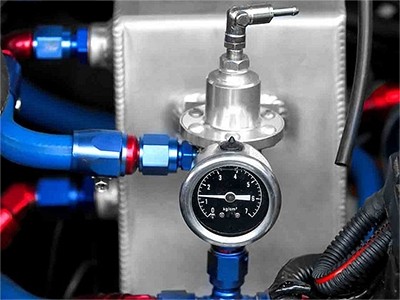Fuel Pressure Regulator Malfunction: Causes and Solutions
A malfunctioning fuel pressure regulator can lead to problems within the fuel system, impacting engine performance and fuel efficiency.
Causes of Fuel Pressure Regulator Malfunction:
- Damaged Regulator: Continuous usage or aging can cause internal components of the fuel pressure regulator to wear out or become damaged, leading to a malfunction.
- Contamination or Blockage: Contaminants or debris in the fuel system can enter the fuel pressure regulator, affecting its proper operation. This may include sediment, corrosion, or other foreign substances.
Solutions for Fuel Pressure Regulator Malfunction:
- Replace the Fuel Pressure Regulator: If the fuel pressure regulator is damaged and cannot be repaired, it needs to be replaced with a new one. Ensure that the replacement regulator meets the specifications required by the vehicle manufacturer.
- Clean or Repair the Regulator: In some cases, the fuel pressure regulator may become clogged or damaged due to contaminants or debris. Attempt cleaning or repairing the regulator to remove blockages or restore normal operation.
- Check the Fuel Supply System: Inspect the entire fuel supply system, including the fuel filter and fuel pump, to ensure they are free from any issues. Repair or replace any components that show abnormalities to ensure the proper functioning of the fuel pressure regulator.
- Professional Inspection and Repair: Fuel pressure regulator malfunctions may require the expertise of professional automotive technicians for accurate diagnosis and repairs. They can use specialized equipment and knowledge to pinpoint the problem and take appropriate measures to restore the proper functioning of the fuel system.
Important Note: Due to the direct impact on engine safety, it is essential to have any relevant repairs performed by experienced professionals to ensure safety and reliability.

Preventive Measures:
- Regular Maintenance: Follow the manufacturer's recommended maintenance schedule for the fuel system to prevent premature wear and reduce the likelihood of fuel pressure regulator malfunctions.
- Quality Fuel: Use high-quality fuel to minimize contaminants and reduce the risk of clogging or damage to fuel system components.
- Proper Fuel System Installation: Ensure that the fuel system, including the fuel pressure regulator, is installed correctly to avoid any issues arising from improper installation.
Identifying and addressing the causes of fuel pressure regulator malfunction through replacement, cleaning, repair, and thorough inspection of the fuel supply system are effective solutions. Regular maintenance, the use of quality fuel, and proper installation contribute to preventing fuel pressure regulator malfunctions.













